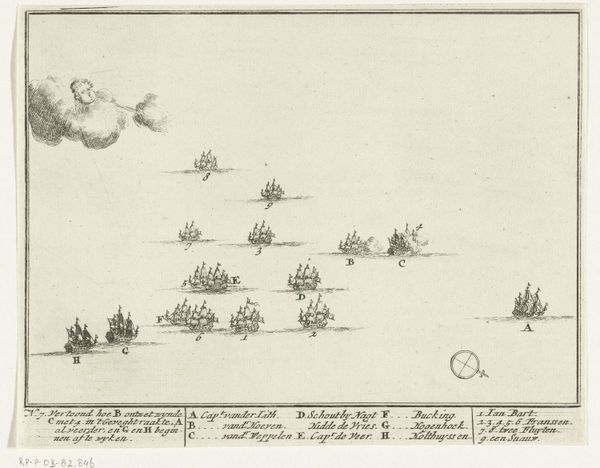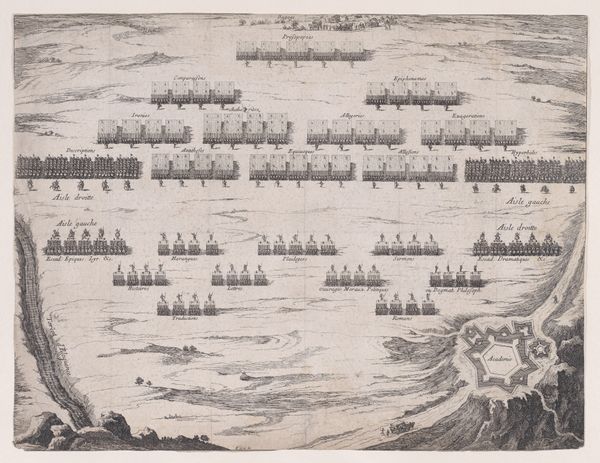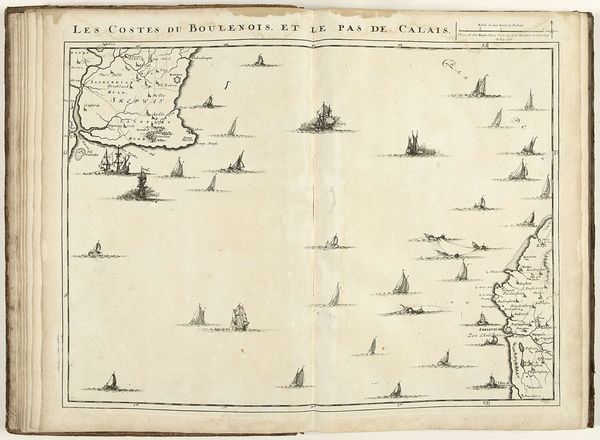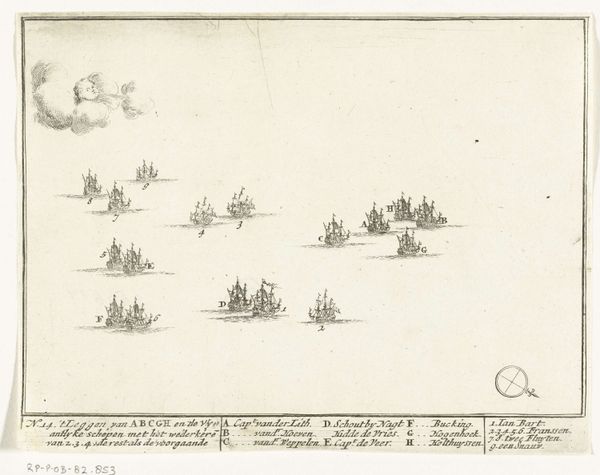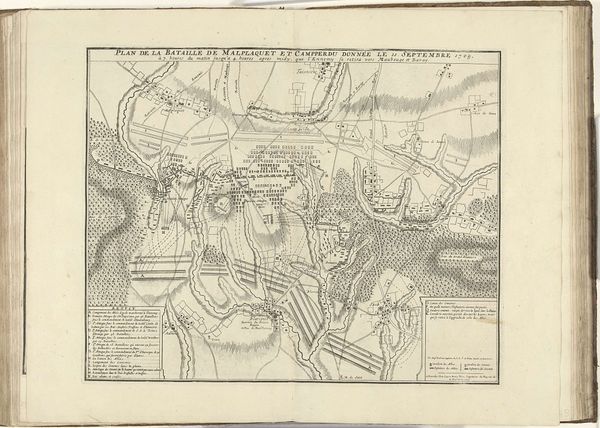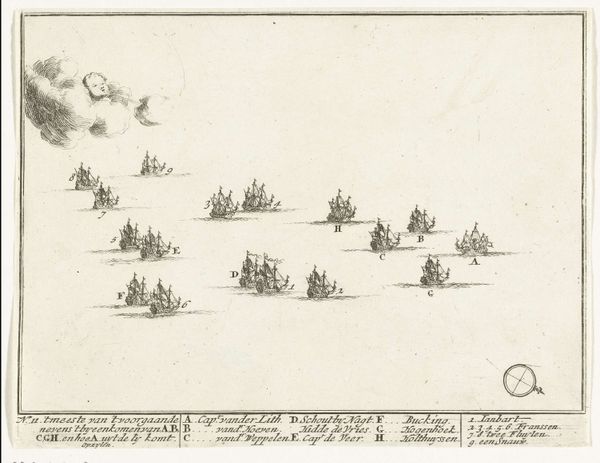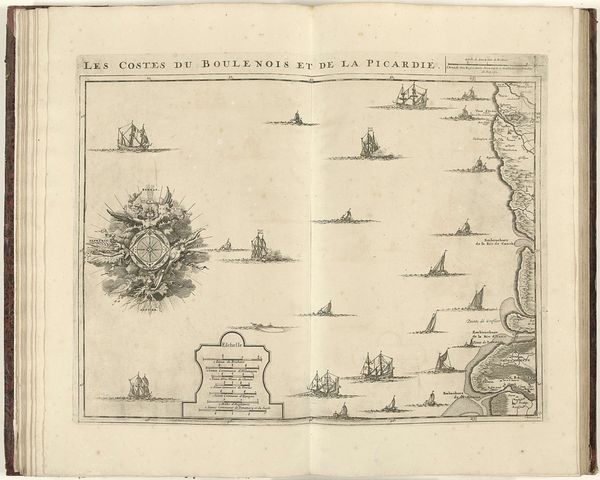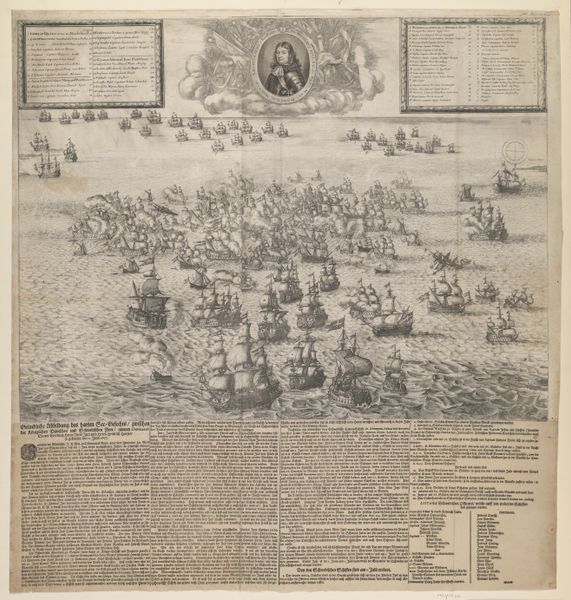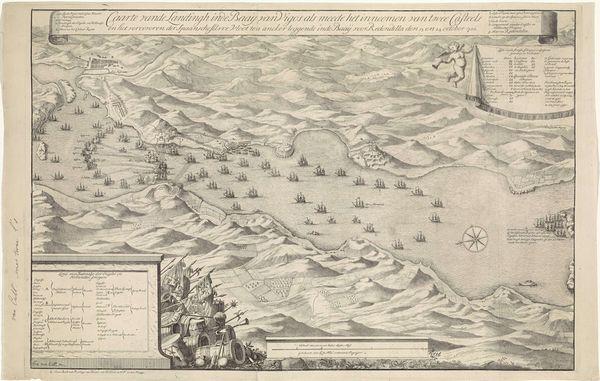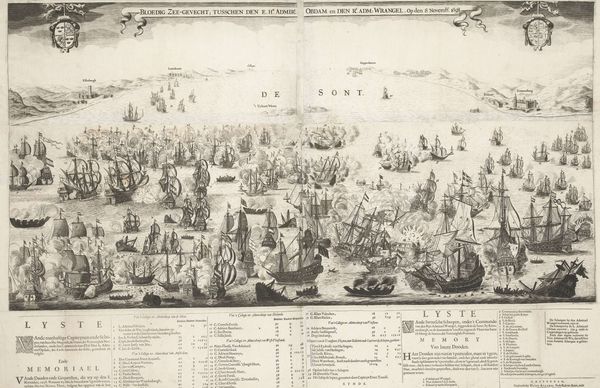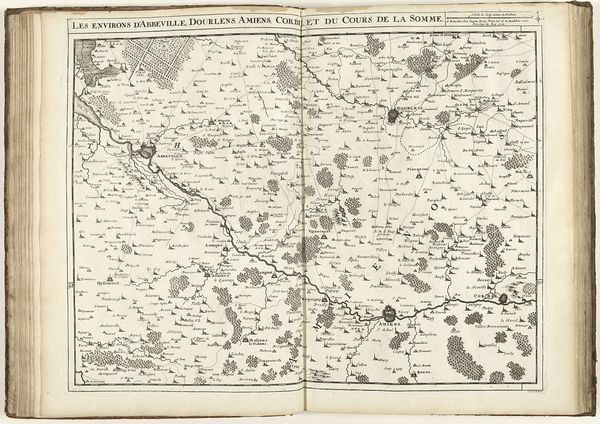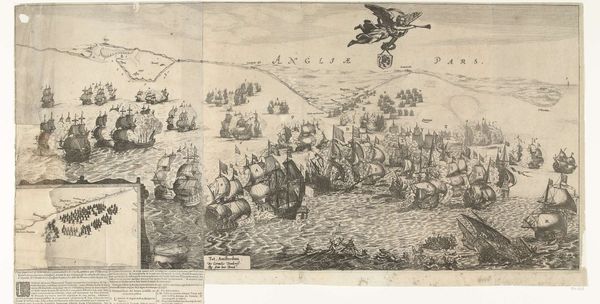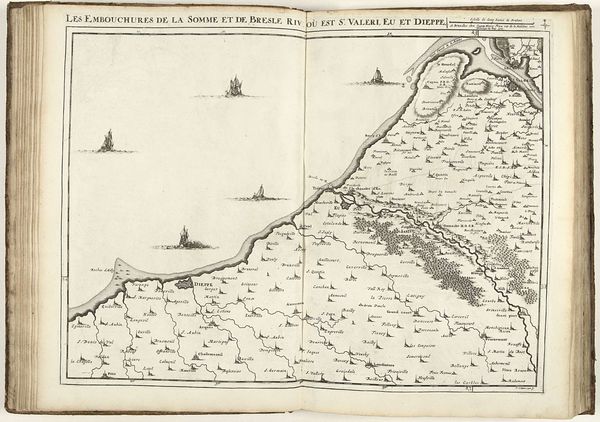
Kaart met slagordes van de Nederlandse en Engelse schepen bij de zeeslag bij Doggersbank, 1781 1781
Dimensions: height 472 mm, width 370 mm
Copyright: Rijks Museum: Open Domain
Editor: Here we have a print from 1781 entitled "Kaart met slagordes van de Nederlandse en Engelse schepen bij de zeeslag bij Doggersbank", or "Map of the Orders of Battle of the Dutch and English Ships at the Battle of Dogger Bank." It seems like a pretty straightforward historical record, almost like a diagram. What do you see in this piece? Curator: I see far more than a diagram; I see a representation of power, conflict, and burgeoning national identities clashing on the open sea. Consider the Age of Sail not merely as a technological era but as a crucible forging global trade routes steeped in colonialism, where maritime battles dictated geopolitical control and exploited resources across continents. What stories might these ships tell, were they able to speak of the human cargo and plundered goods they transported? Editor: That’s a powerful way to think about it. The focus on individual ships makes it easy to forget the bigger picture. Curator: Exactly! And the 'detail plan' sections are particularly fascinating when you bring issues of representation into play. Who is documented? How are the various naval ranks recorded? This seemingly objective record embeds implicit class and national biases in how the story is framed and whose experience gets privileged in this visual account. This artwork reflects a very specific perspective on this historical event, filtered through layers of power. Do you think this "objectivity" changes the way viewers from different cultural backgrounds interpret the image? Editor: It probably does. Someone from England might feel proud looking at this. Someone from another colonized country could see it as a symbol of oppression. I never thought of maps having that level of impact. Curator: Precisely. Visual documents such as this reveal as much about the era’s sociopolitical structures as they do about specific historical events. Analyzing art through this lens empowers us to challenge the power dynamics and reclaim narratives silenced throughout history. Editor: I'm leaving with a completely new outlook. I see so many potential avenues for investigation, viewing historical art with a more analytical perspective!
Comments
No comments
Be the first to comment and join the conversation on the ultimate creative platform.
